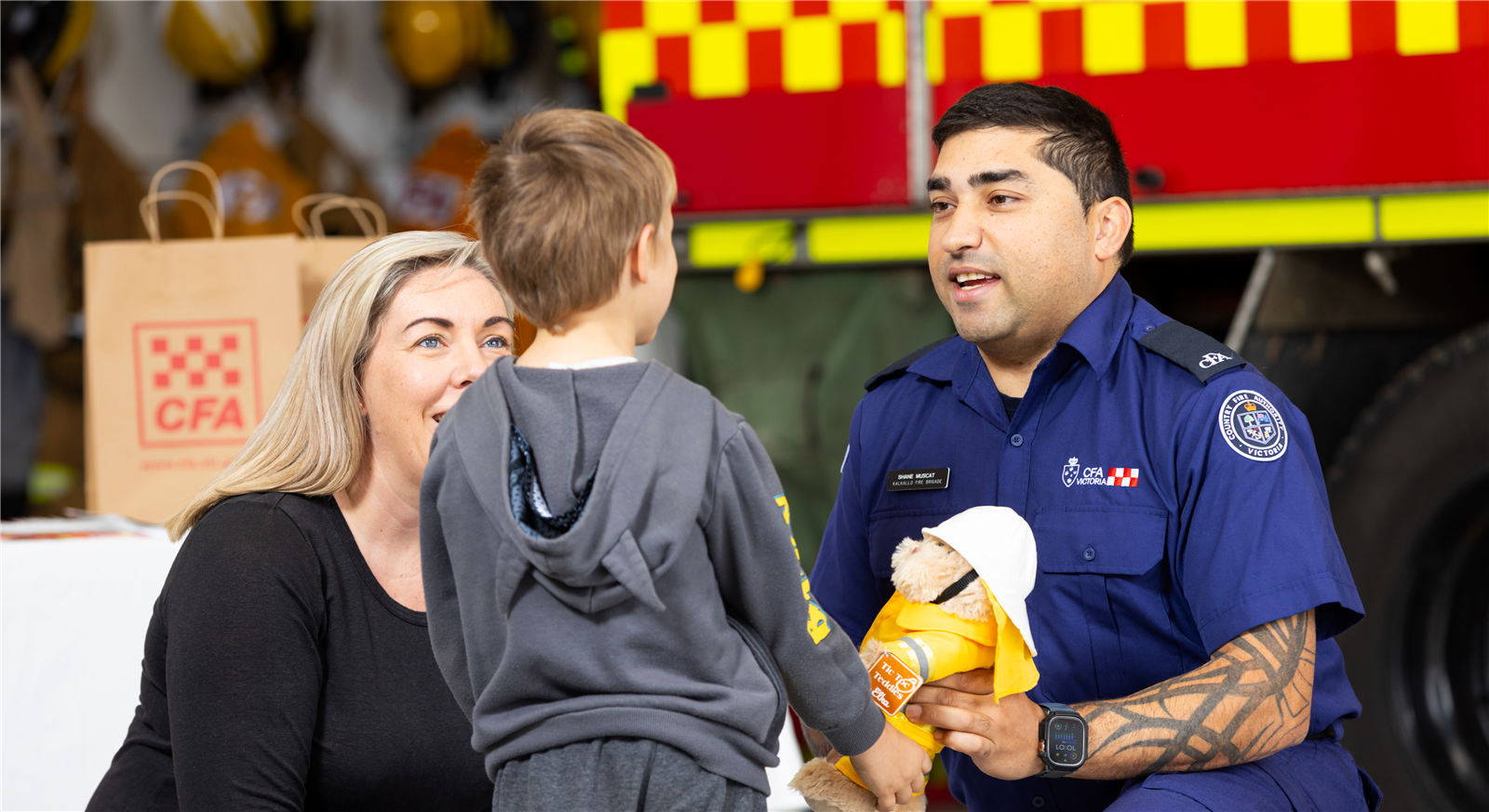Update from DCO Fire Risk, Research and Community Preparedness Alen Slijepcevic AFSM
 https://digitallibrary.cfa.vic.gov.au
https://digitallibrary.cfa.vic.gov.au
With our Planned Burn Program winding down for this financial year, we turn our focus to residential fire safety and preparing ourselves and our communities for the next fire season.
Managing future fire risk through fuel management program
Our Planned Burn Taskforce of more than 710 volunteers is assisting greatly in our capability and capacity to deliver this year’s planned burn program, with deployment numbers reaching their highest levels since the program began in 2019.
Supported by regional vegetation management teams, our volunteers have ignited 243 burns (263 operations) covering 5,448 hectares, including 55 out of 57 priority burns. More than 717 hectares of non-burn fuel treatments across 42 treatments have also been completed this financial year. Overall, this was a great year. Well done and thank you to all involved on an excellent achievement!
The taskforce has also supported increased cultural burning by Traditional Owners across the state, and members were pivotal in the success of our largest planned burn to date at Lake Tyers Aboriginal Trust in May.
Our burn program is outlined in the state’s Joint Fuel Management Program. A review of the current program and development of next year's program is underway in conjunction with FFMVic, with regions nominating new treatments for the next three years.
The Vegetation Management team is also finalising the Ecological Resilience Monitoring and Fuel Load Monitoring Plan to ensure fuel reduction and ecological burns in native grassland areas such as roadsides and rail corridors are having a positive environmental impact long term.
Engaging our communities and industry
An important part of the work we do to mitigate fire risk is creating a culture of ongoing conversation between CFA, its communities and the agencies we work with every day.
West Region Community First Community Based Bushfire Management facilitator Bridget Clarke presented at the recent International Fire Behaviour and Fuels Conference about the benefits of creating opportunities for agencies to learn from and collaborate with communities on activities such as planned burns and disaster recovery. Read the full story
Building strong relationships with local government and Municipal Fire Prevention Officers (MFPO) is another critical part of our fire mitigation strategy. In the past 18 months, our Fire Management Planning Coordinator has travelled over the state visiting MFPOs in their patch. In addition to allowing us to build these relationships, the visits give CFA a better understanding of each municipality’s varied local conditions and risks. Read more
Our Community First team is working with Behaviour Works Australia at Monash University to deliver a bootcamp designed to help agencies improve how they work with communities and each other. About 30 people from Red Cross, DEECA, Victoria Legal Aid, local government and CFA have been involved in the Behaviour-Change Bootcamp, participating in workshops and webinars and working one on one with behavioural change experts. Learn more
With our winter home fire safety campaign in full swing, another key training package has been updated to help prevent fires in the home of people at higher risk in our community. Prevent, Detect, Escape was developed in 2022 in conjunction with Fire Rescue Victoria to support older people and people with disabilities to plan for fire emergencies at home.
More than 4,000 people have now completed the module, with recent updates including clearer smoke alarm information, improved accessibility and new scenario-based learning. Learn more about the updates
Using research to plan and prepare for fire
The Schools in Fire Country project has been a fantastic example of importance of using research to guide the development and delivery of fire and natural disaster education. CFA’s Neil Munro was recently part of webinar that showcased the development of the award-winning program and the importance of involving all stakeholders including young people in the design and delivery of bushfire education programs. Watch the webinar here
Looking forward, with the AFAC outlook for winter highlighting a potential early start to the fire season for many locations, it was great to get such a positive response to our callout for citizen grass curing observers. We have 20 new volunteers coming on board to inform our decision-making over the coming fire season.
Our Research team is also developing a new dashboard that will bring together curing, rainfall and incident trends for the whole state to allow us to compare and track the current fire season against past seasons. Read more about the Bushfire Preparedness Service
Finally, it was an honour to be awarded the International Association of Wildland Fire (IAWF) Distinguished Service Award at recent 2024 Fire Behaviour and Fuels Conference; I was extremely honoured to be recognised. I would also like to take this opportunity to thank everyone who donated to the Emergency Services Foundation’s trek to Mt Everest Base Camp which took place in March. It was an amazing albeit challenging experience but importantly more than $37,000 was raised to support the mental health and wellbeing of emergency services people through prevention and early intervention programs.
If you would like more information on the work underway in the Fire Risk, Research and Community Preparedness team, visit Members Online.
| Submitted by |
DCO Fire Risk, Research and Community Preparedness Alen Slijepcevic AFSM |